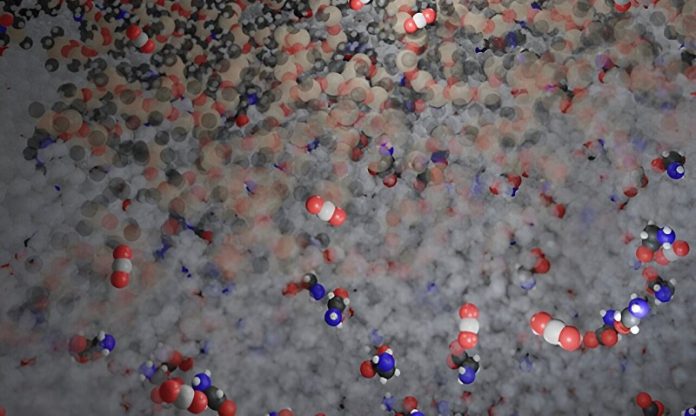
Researchers at Oak Ridge National Laboratory (ORNL) have discovered that making a small tweak to a chemical process can significantly improve the ability to capture carbon dioxide (CO₂) from the air.
This discovery could play a big role in advancing direct air capture (DAC) technology, which is a method used to remove CO₂ directly from the atmosphere.
The key to this improvement lies in amino acids, which are natural compounds that react easily with CO₂ and are environmentally friendly.
However, in their natural state, amino acids don’t naturally stick to surfaces where they could effectively capture CO₂ from the air.
To solve this problem, the ORNL team made a small but important change. They added a charged polymer layer to a solution containing amino acids.
By using advanced techniques like spectroscopy and computer simulations, they found that this charged layer helps the amino acids stick to surfaces. This small change made a big difference: it improved the rate at which CO₂ was captured by 15%.
“It’s amazing to see that such a small change at the surface can make such a huge difference,” said Uvinduni Premadasa, a researcher at ORNL.
One challenge with DAC technology is that once the solution used to capture CO₂ becomes saturated, it needs to be regenerated, meaning the captured CO₂ must be removed so the solution can be used again.
The researchers at ORNL are now looking into more energy-efficient ways to refresh these materials, making the entire process more sustainable.
This discovery is an important step forward in the fight against climate change. By making small adjustments to how we capture CO₂, we can make these technologies more efficient and effective, helping to reduce the amount of greenhouse gases in our atmosphere. The research findings were published in the journal ACS Applied Materials & Interfaces.



